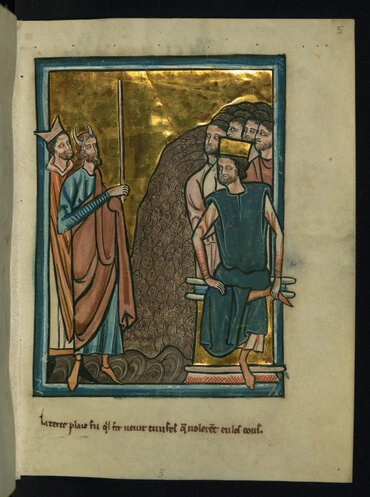1
Mens Israel opholdt sig i Sittim, begynte folket å drive utukt med Moabs døtre.
2
De innbød folket til offermåltidene for sine guder, og folket åt og tilbad deres guder;
3
og Israel holdt sig til Ba'al-Peor. Da optendtes Herrens vrede mot Israel,
4
og Herren sa til Moses: Hent alle folkets høvdinger og la hine menn nagles til pelen under åpen himmel for Herren! Så skal Herrens brennende vrede avvendes fra Israel.
5
Og Moses sa til Israels dommere: Hver av eder skal slå ihjel dem av sine folk som har holdt sig til Ba'al-Peor!
6
Da kom en mann av Israels barn og førte en midianittisk kvinne inn blandt sine brødre for Moses' og hele Israels menighets øine mens de satt og gråt ved inngangen til sammenkomstens telt.
7
Da Pinehas, sønn av Eleasar og sønnesønn av Aron, presten, så det, trådte han frem av menigheten og tok et spyd i sin hånd
8
og gikk efter den israelittiske mann inn i koven og stakk spydet gjennem dem begge, både den israelittiske mann og kvinnen, så det gikk inn i hennes liv; da stanset sotten og vek fra Israels barn.
9
Og de som døde i sotten, var fire og tyve tusen.
10
Og Herren talte til Moses og sa:
11
Pinehas, sønn av Eleasar og sønnesønn av Aron, presten, har avvendt min vrede fra Israels barn, fordi han brente av min nidkjærhet iblandt dem, så jeg ikke gjorde ende på Israels barn i min nidkjærhet.
12
Derfor skal du si: Se, jeg gjør min pakt med ham at det skal gå ham vel;
13
med ham og hans efterkommere gjør jeg en pakt at de skal ha et evig prestedømme, fordi han var nidkjær for sin Gud og gjorde soning for Israels barn.
14
Men navnet på den drepte israelittiske mann, han som blev drept sammen med den midianittiske kvinne, var Simri, sønn av Salu, høvding for en familie blandt simeonittene;
15
og den drepte midianittiske kvinnes navn var Kosbi, datter av Sur; han var høvding for en stammefamilie blandt midianittene.
16
Og Herren talte til Moses og sa:
17
Angrip midianittene og slå dem!
18
For de angrep eder med de svikefulle råd som de brukte mot eder, da det hendte dette med Peor og med Kosbi, deres søster, den midianittiske fyrstes datter, hun som blev drept dengang sotten kom over eder for Peors skyld.







